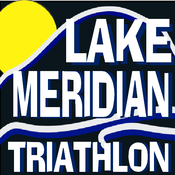 Article provided by: Holly Pennington, PT, DPT with Andrea Steele, PA-C Have you ever wondered about plant-based diets or considered veganism? In this Q&A with Andrea Steele, PA-C and founder of The Plant Fueled Family, we will explore what plant-based diets are, how they are beneficial for athletes and tips for getting started. Let’s start with the basics, what’s the difference between plant-based and vegan? Andrea Steele (AS): Great question, and I wish I had an answer that everyone agreed with! I can, however tell you my interpretation. Vegans do not consume any product derived from an animal (including wearing leather, silk, fur or wool).1 Those that follow a whole food plant based diet (WFPBD) try to get their nutrients from a wide variety of fruits, vegetable, grains, legumes, nuts and seeds. Many avoid oil (2), and while many avoid all animal products, some individuals consume honey or even fish from time to time (3). While you can see there is a lot of crossover with veganism, it’s not always quite the same thing. You can really get into the weeds with this, and some contentious interchanges, which defeats the purpose! The goal here is health (and for many, ethics and sustainability), and not perfection. You are a busy, working mom of 3 young children. When and why did you decide to switch to a plant-based diet, and did your whole family transition at the same time? AS: The short (ish?) version is that I was on maternity leave with our first child, on the couch nursing. I was binge watching documentaries (my favorite!) and came across Forks Over Knives, Food Inc., Veducated, Fat, and Sick and Nearly Dead. I was blown away. I am a medical professional, how was I never privy to this information? The data is compelling, and to the scientific thinker in me, it made sense. At that time, I was practicing in internal medicine- it was literally my job to educate patients about wellness, as well as optimally addressing and treating their acute and chronic illnesses. I immediately knew I needed to do better, learn more. However, if I were to paint the picture that we were eating tofu and snap peas overnight, I’d be a liar. Emotionally, I wanted to make the switch NOW. In reality, it took time to create the recipes, flavor profiles, and depth of flavors that make our meals so satisfying now. The resources are so much more plentiful now, and the documentaries keep coming! What The Health, Cowspiracy, and many more (look for Game Changers this September!). What are your best tips for those wanting to transition to a plant based diet? AS: The key is finding ways to prepare and season plants in a way that mimics the same textures and flavors as your previously favorite foods. Remember, most of the flavors we enjoy in delicious food actually come from plants (garlic, onion, basil, rosemary, chili etc). Experiment, find resources online or on Instagram. Join a FB group. You’ll find communities of folks in the same boat. Start small, and gradually make substitutions in your diet. Do you feel it needs to be an all-or-nothing commitment to reap the benefits? AS: I would argue no! Any changes you make to incorporate WFPB choices into your diet are going to contribute to your overall health. From a health standpoint, this tends to be one of those situations where “more is better”, but every body, every family, is so unique that there are going to be variations. It isn’t about having a “perfect” diet, it’s about striving for better food choices. It’s getting easier to do this, and eating plant-based is more popular these days! What we need to get away from is mainstream advertising that tells us a sandwich stuffed with Cheetos and a Mountain Dew on the side are an adequate lunch (yes, I saw that commercial yesterday!). How can plant-based diet help athletes recover better, and/or heal from injuries? AS: Plant-based diets have high antioxidant and micronutrient profiles, which in turn can speed recovery. This is accomplished by reducing oxidative stress in the cells, which contributes to everything from heart disease and cancer, to Alzheimer’s disease (and so many more!).(4) Contrary to the belief of some, a WFPBD also provides adequate protein from all 20 amino acids, which aids muscle growth and repair. This diet also lacks meat, dairy, and eggs, all of which tend to induce inflammation.(5,6,7) As an athlete, you are putting stress on the body and wanting it to recover as fast as possible for your next workout. A WFPBD provides just that-all of the key nutrients to recover faster, without the processed or inflammation-inducing components. Not only that, you’re reaping the longevity and disease prevention benefits! You’ll find hoards of athletes (many professional!) who say they have never performed better or recovered faster since adopting a WFPBD. What is your favorite recipe right now? AS: Oh man, you’re going to make me pick! I’ll tell you the 2 recipes we have in “the rotation” frequently right now are the Caulifredo and Black Bean Houdini brownies. Speaking of those interested in transitioning to plant-based, these are amazing! https://www.theplantfueledfamily.com/caulifredo-sauce/ https://www.theplantfueledfamily.com/black-bean-houdini-brownies/ For more great recipes, follow Andrea on Instagram @theplantfueledfamily and The Plant Fueled Family Facebook page. Have an ache or pain holding you back this season? Come in for a free consult with a Board Certified Physical Therapist. Visit www.outpatientpt.com to find a location near you.
0 Comments
Your comment will be posted after it is approved.
Leave a Reply. |
Raise the BarRace reports, upcoming events, news, and more, from RTB. Archives
September 2023
|
 RSS Feed
RSS Feed




